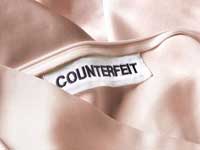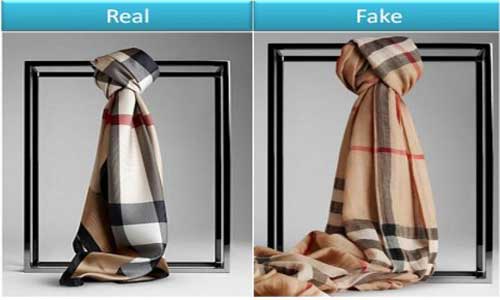"Counterfeit has become a burgeoning trillion-dollar global market despite efforts by international authorities. Fashion garments are some of the most reproduced products with the greatest proportion originating in China. The huge growth in the printed textile market, the increasingly affordable cost of direct-to-garment (DTG) printers and the explosion in online trading are some of the reasons fuelling the growth of counterfeit in the UK market."

Counterfeit has become a burgeoning trillion-dollar global market despite efforts by international authorities. Fashion garments are some of the most reproduced products with the greatest proportion originating in China. The huge growth in the printed textile market, the increasingly affordable cost of direct-to-garment (DTG) printers and the explosion in online trading are some of the reasons fuelling the growth of counterfeit in the UK market.
According to Mohsin Omarji, MD, Rialto Designs, with the direct-to-garment market and its new digital technology, one can pick up machines very cheaply now and it’s easy enough for people to stick them in a garage and set up an operation selling garments on eBay.

Digital textile equipment supplier iSub’s Simon Lymn highlights digital is offering new ways to counterfeit goods – fashionable home interiors or fashion wear – and it’s quite rife in certain textile hubs where there is a high concentration of different textile producers and printers. The big problem starts when design agencies outsource their printing. As soon as they send their designs by whatever digital medium it is, the print house then has the design and is able to print it for another client. That’s where the problem lies because they are relying on a company to keep their intellectual property (IP) safe and not profit from it. Most cases never end up in court because they take too long time and fashion cycle keeps changing faster.
What does the law say?
IP, copyright and trademark infringement is primarily enforced by Trading Standards and is a crime that, depending on its extent, can carry some hefty penalties: up to 10 years in prison and an unlimited fine on indictment to a Crown Court, or six months in prison and an unlimited fine through the magistrates’ courts. The Chartered Trading Standards Institute’s lead IP officer Gavin Terry explains that reproducing designs on garments and interior fabrics could contravene a number of laws including the Trade Marks Act and Copyright, Designs and Patents Act.
There is a possibility that a printer may unknowingly reproduce something, where the copyright or IP does not belong to the client, and Terry says that with registered designs and copyright cases, there is a requirement to prove guilty knowledge, however infringing goods are liable to seizure and forfeiture, irrespective of guilty knowledge or not.
What’s a new design?
Copyright law itself is quite lenient as it only requires three changes to be made to a design for it to be considered a ‘new’ design. These changes can be so small as to be insignificant, according to fabric and wallpaper designer Vanessa Arbuthnott.
The haute couture market is taking steps to limit counterfeiting with brands incorporating haute-tech features into their garments, outside of the digital printing process, such as UV-printed yarns, synthetic DNA-laced security markers, invisible inks such as that launched last year by Kodak-backed eApeiron and of course the more common label holograms and QR-codes.
In a new technique, a tiny feature, indiscernible to the naked eye, is incorporated into a digital design. It is an approach being taken by numerous fashion brands, according to Jos Nostermans, worldwide commercial manager for digital textiles, SPGPrints. In his opinion, one of the best measures to protect against digital print counterfeiting in the fashion industry, lie in turnaround times. Some of the huge brands change collections so quickly that counterfeiters can’t possibly copy, print and distribute fast enough.












